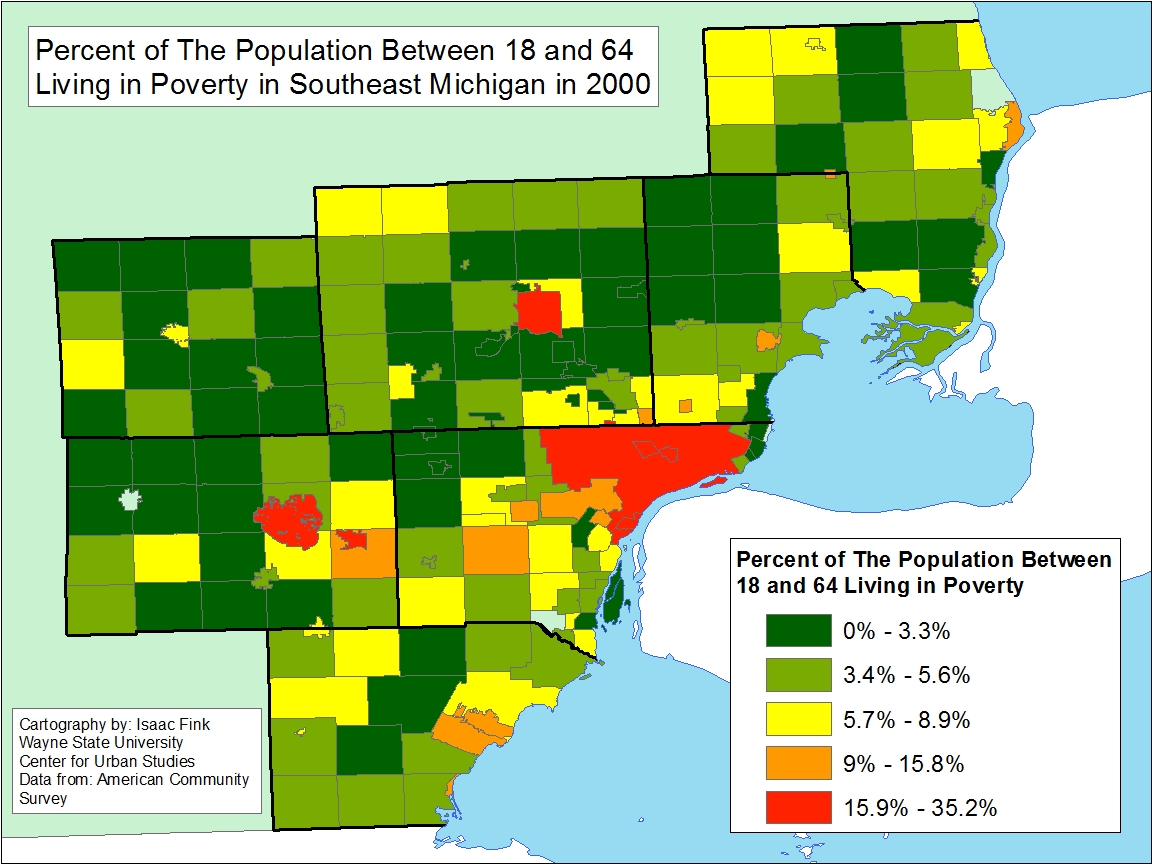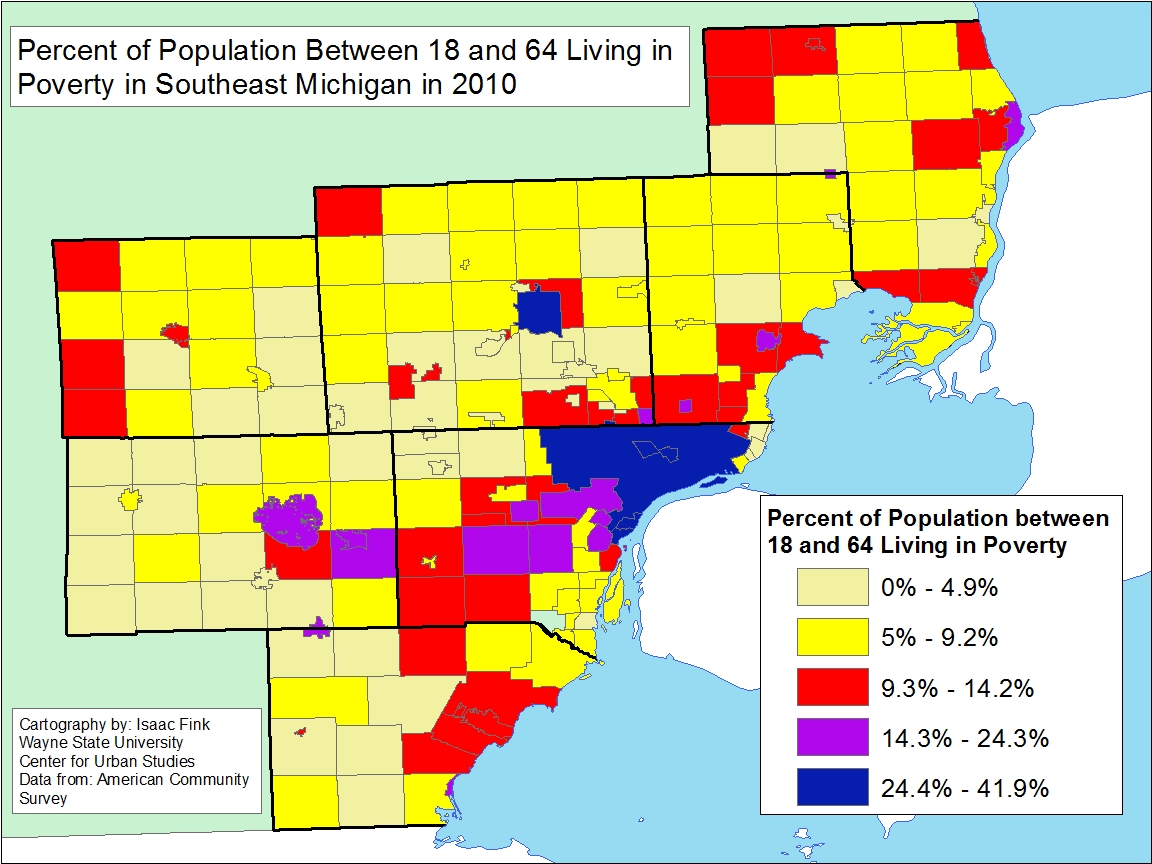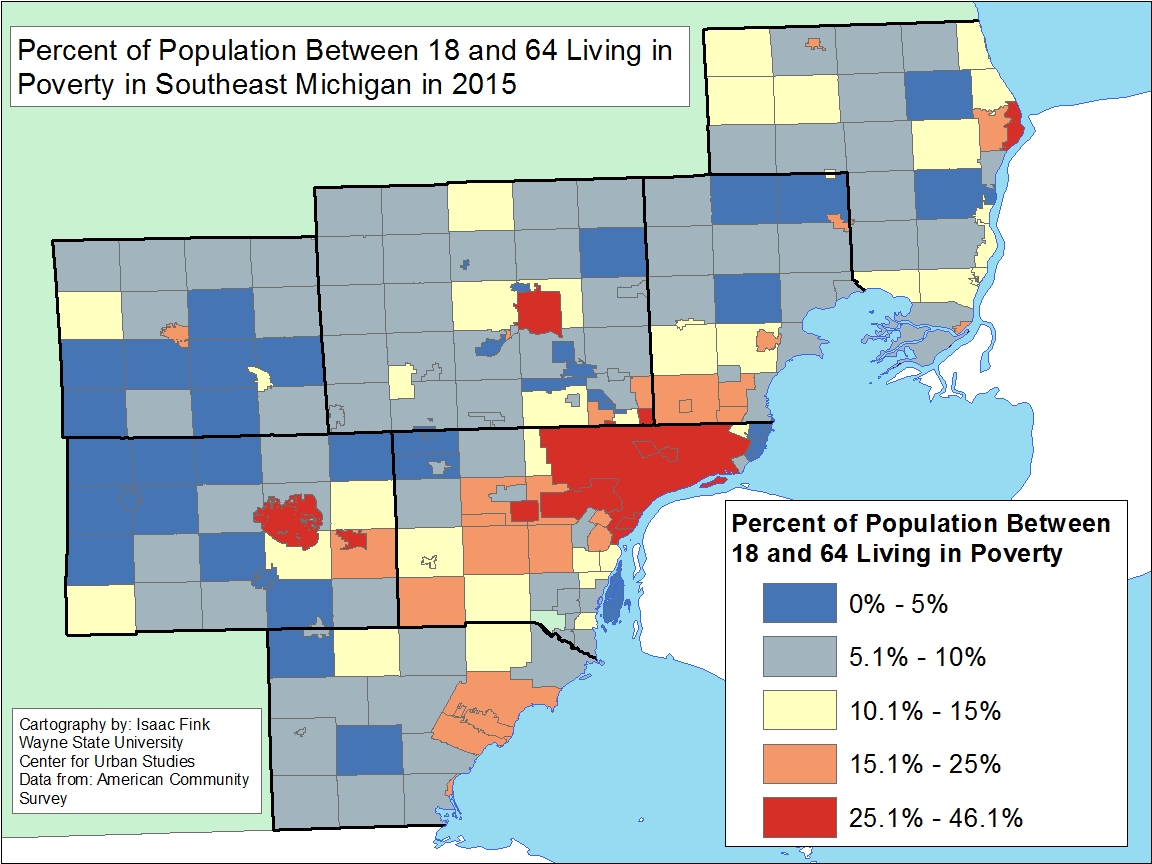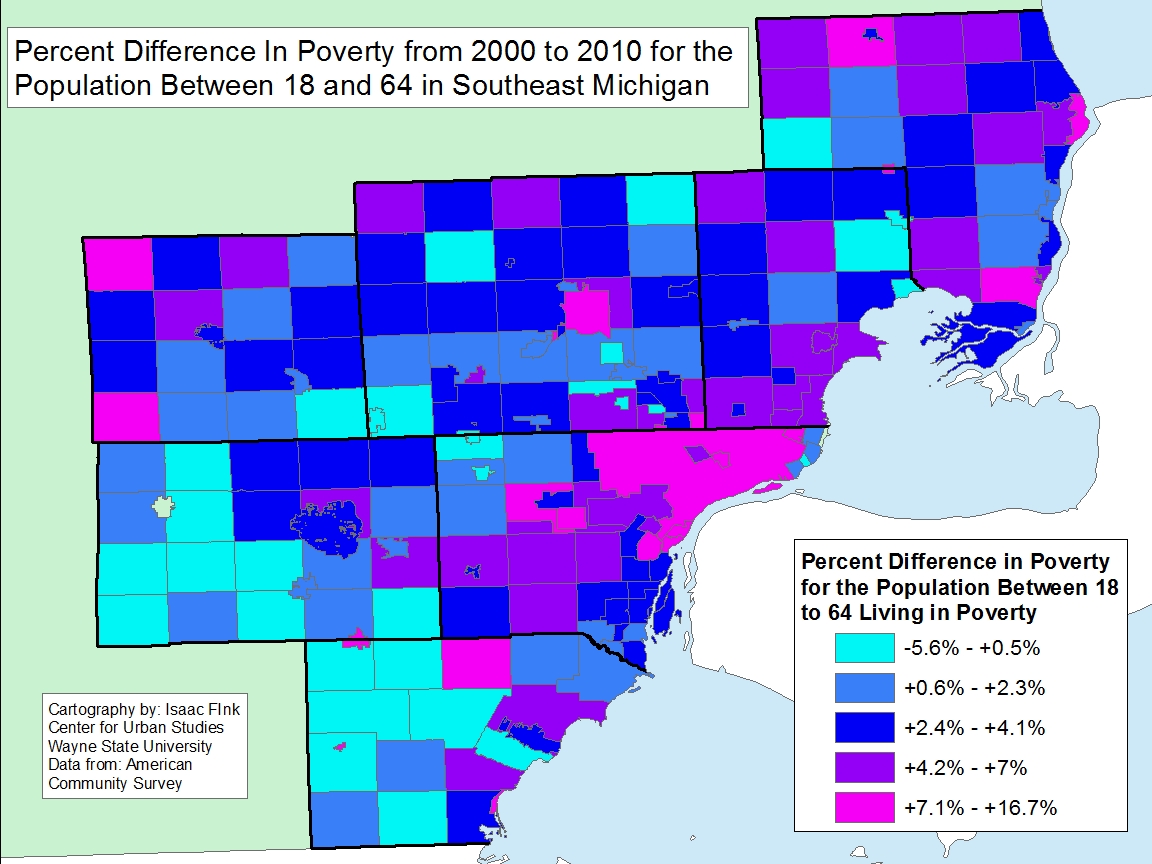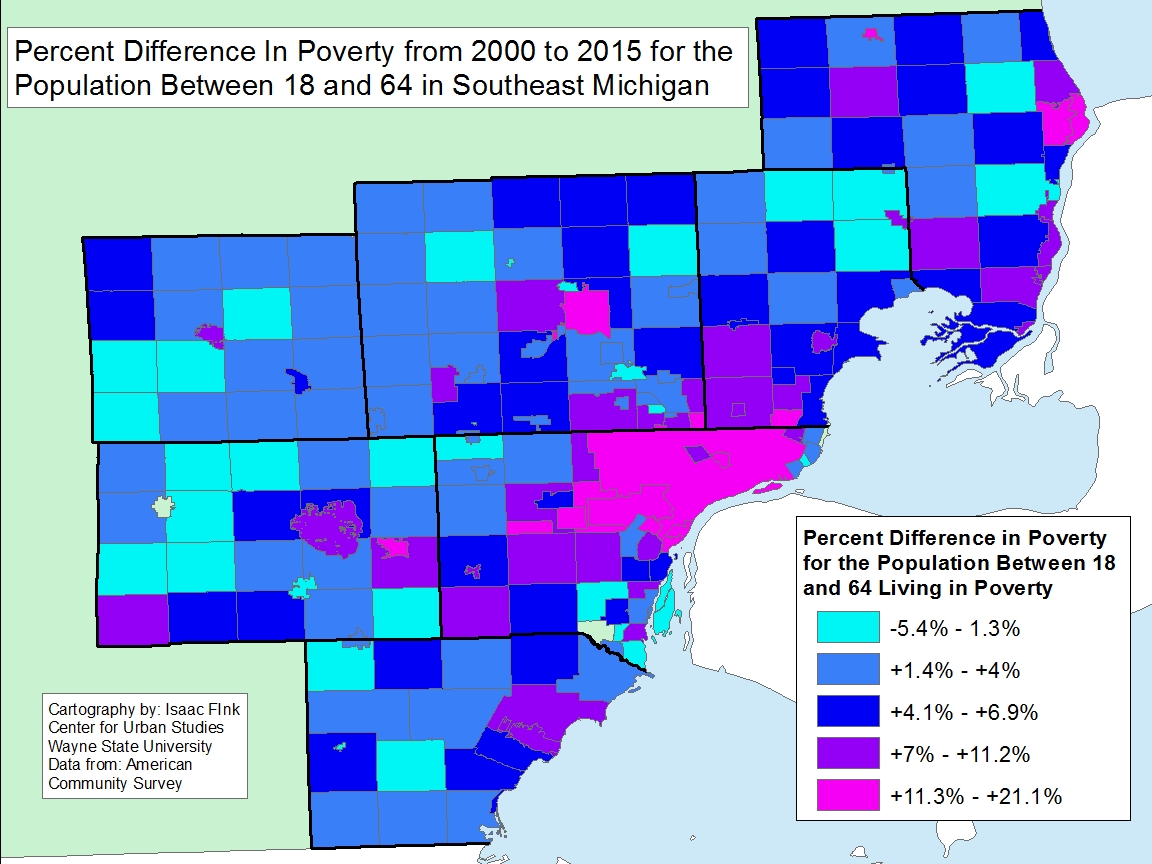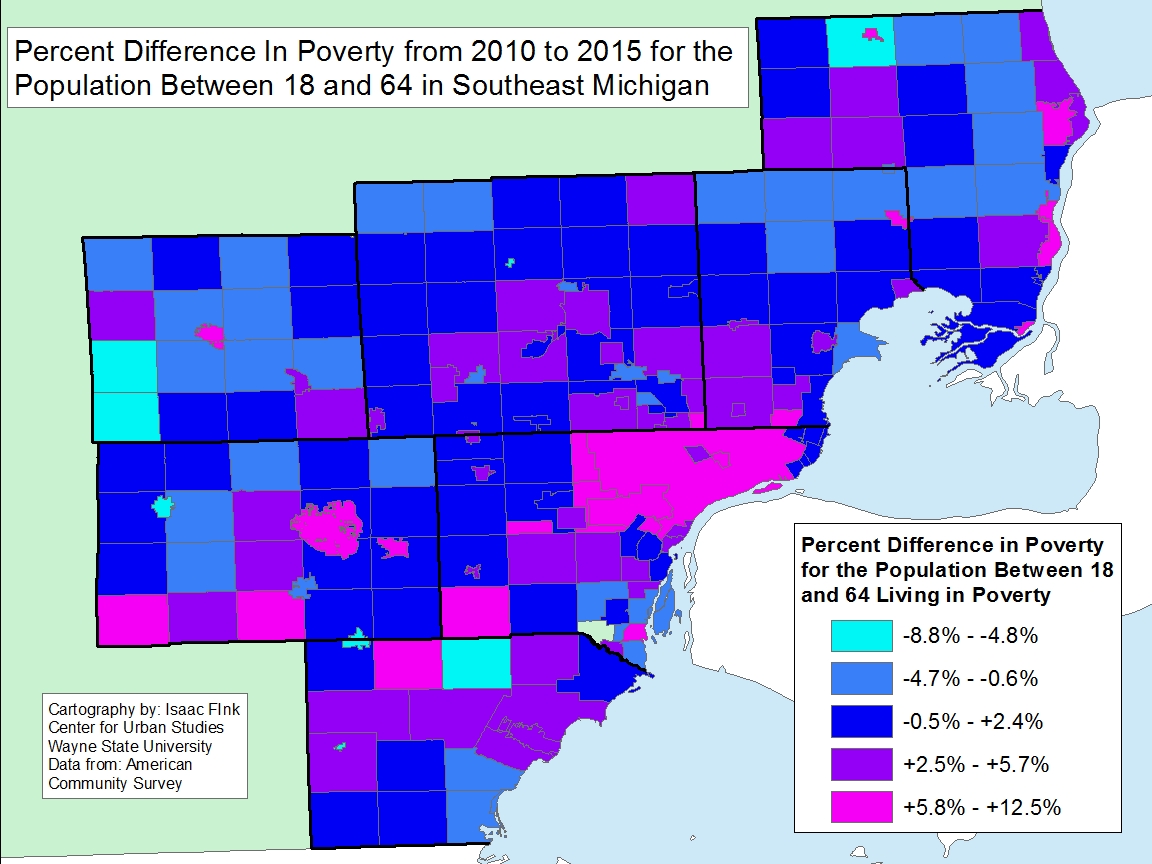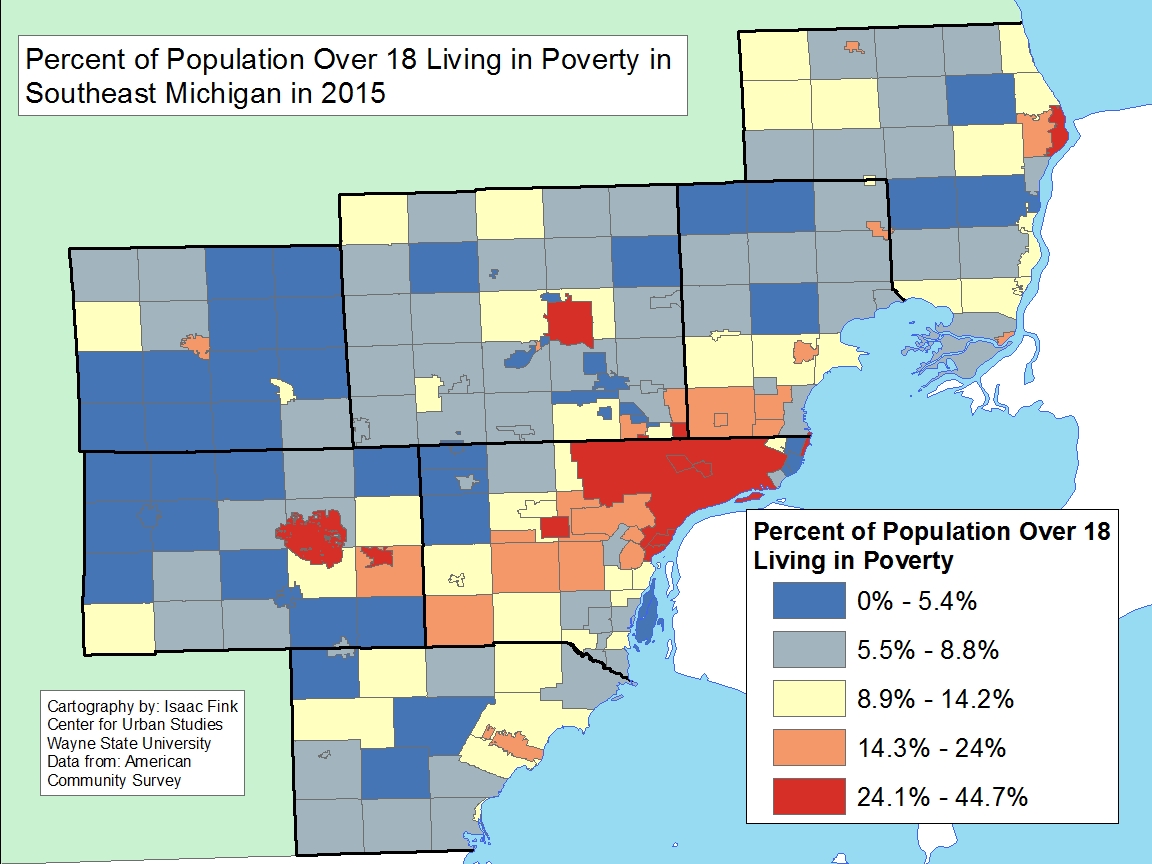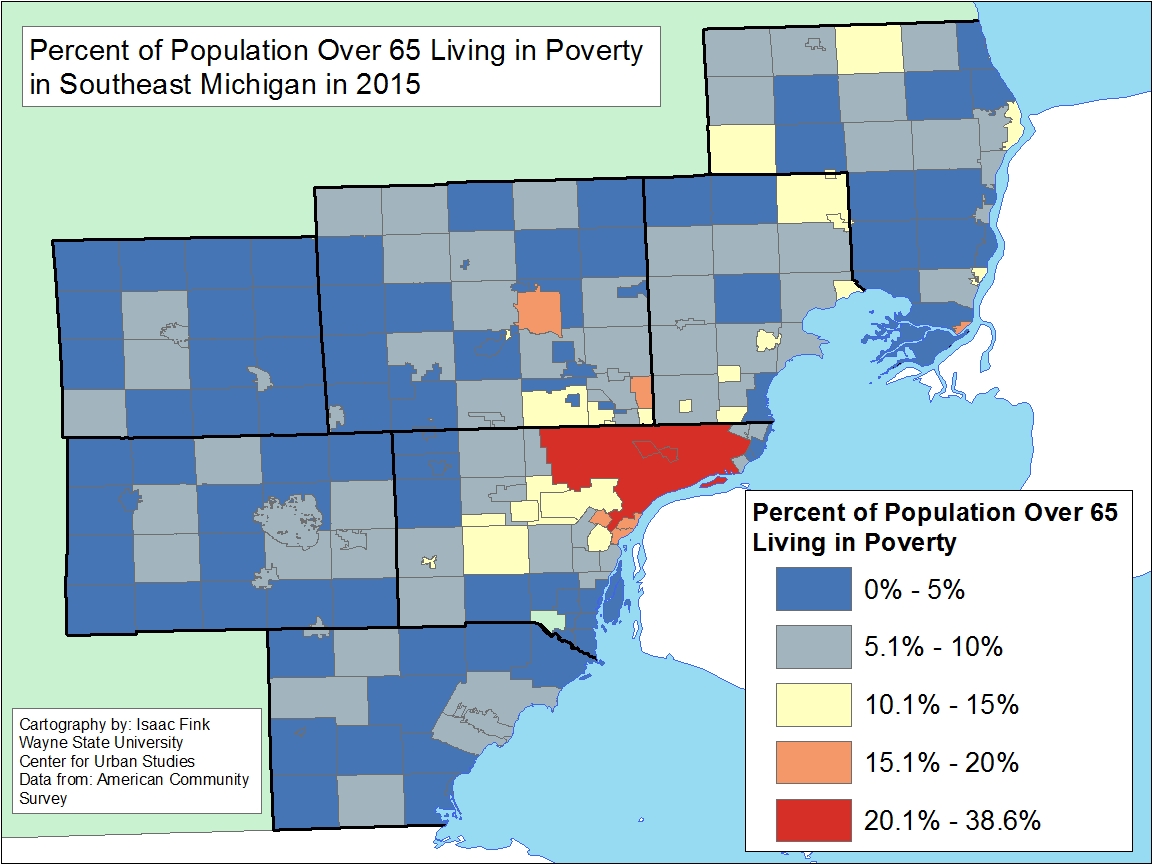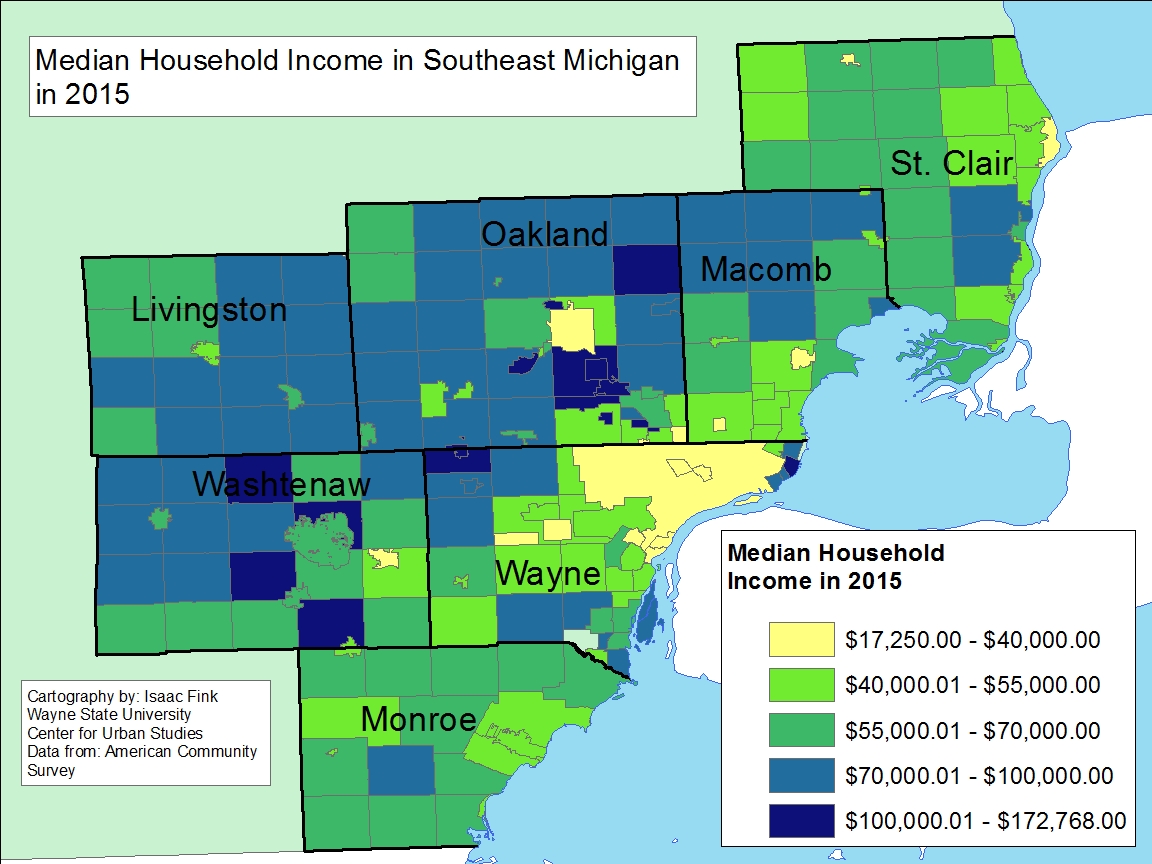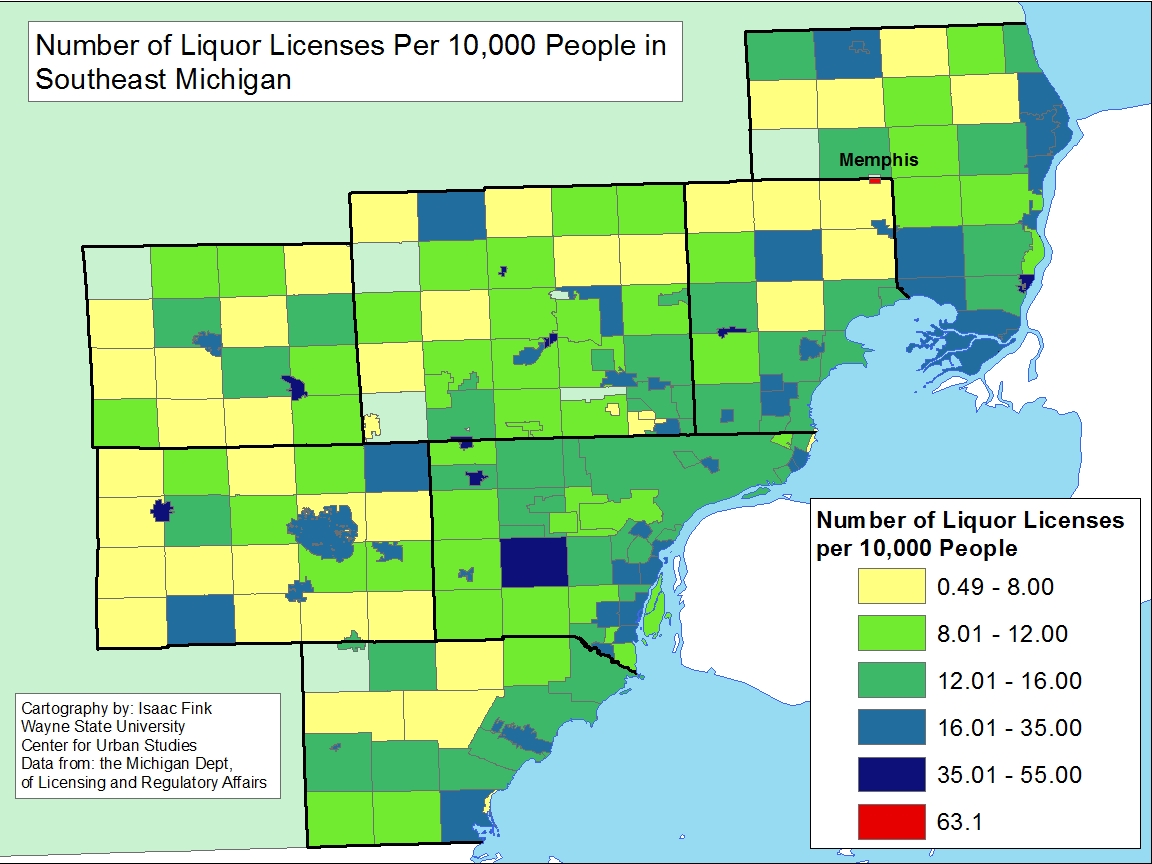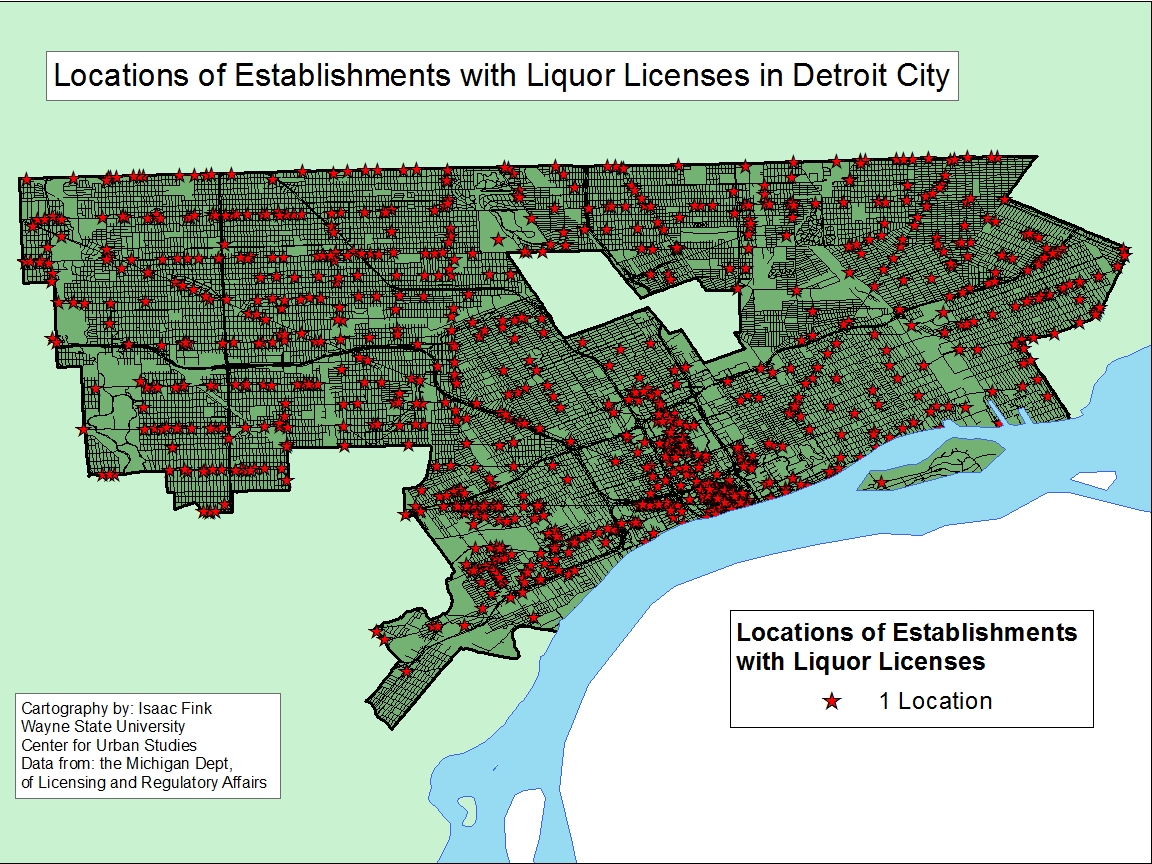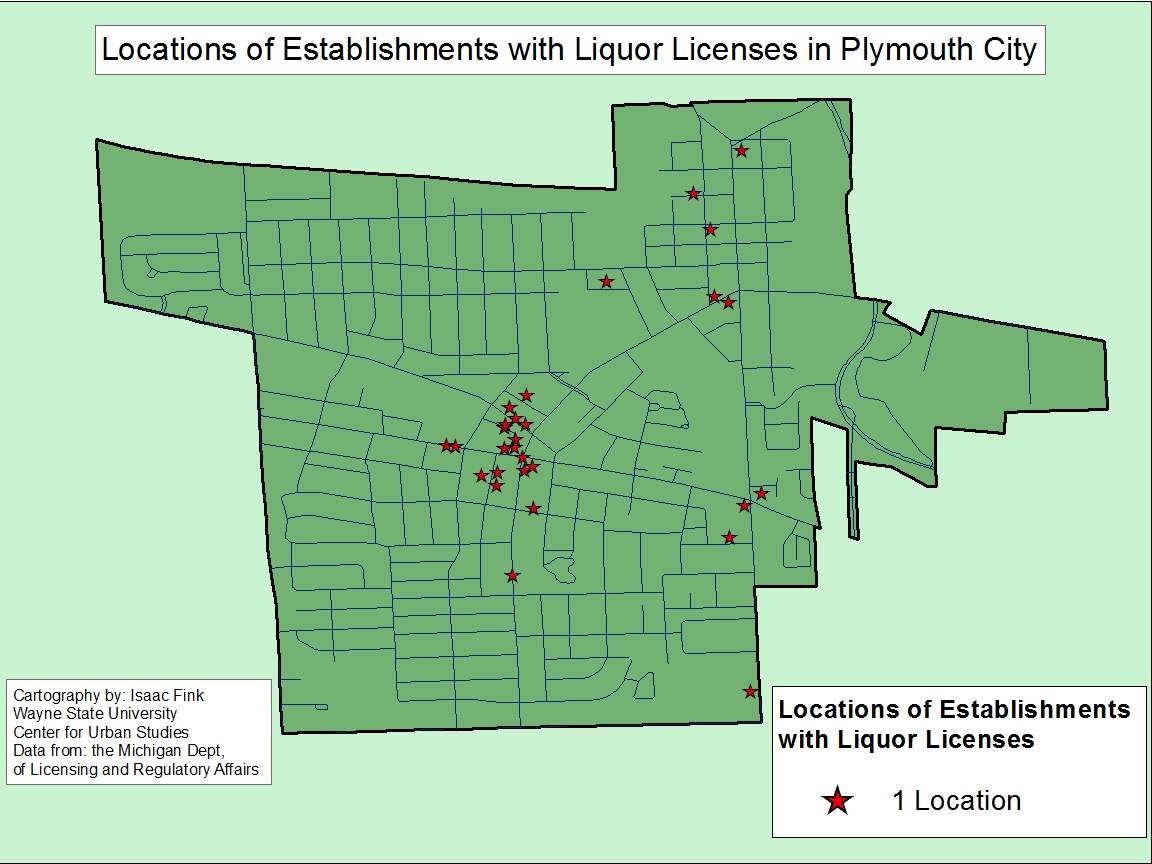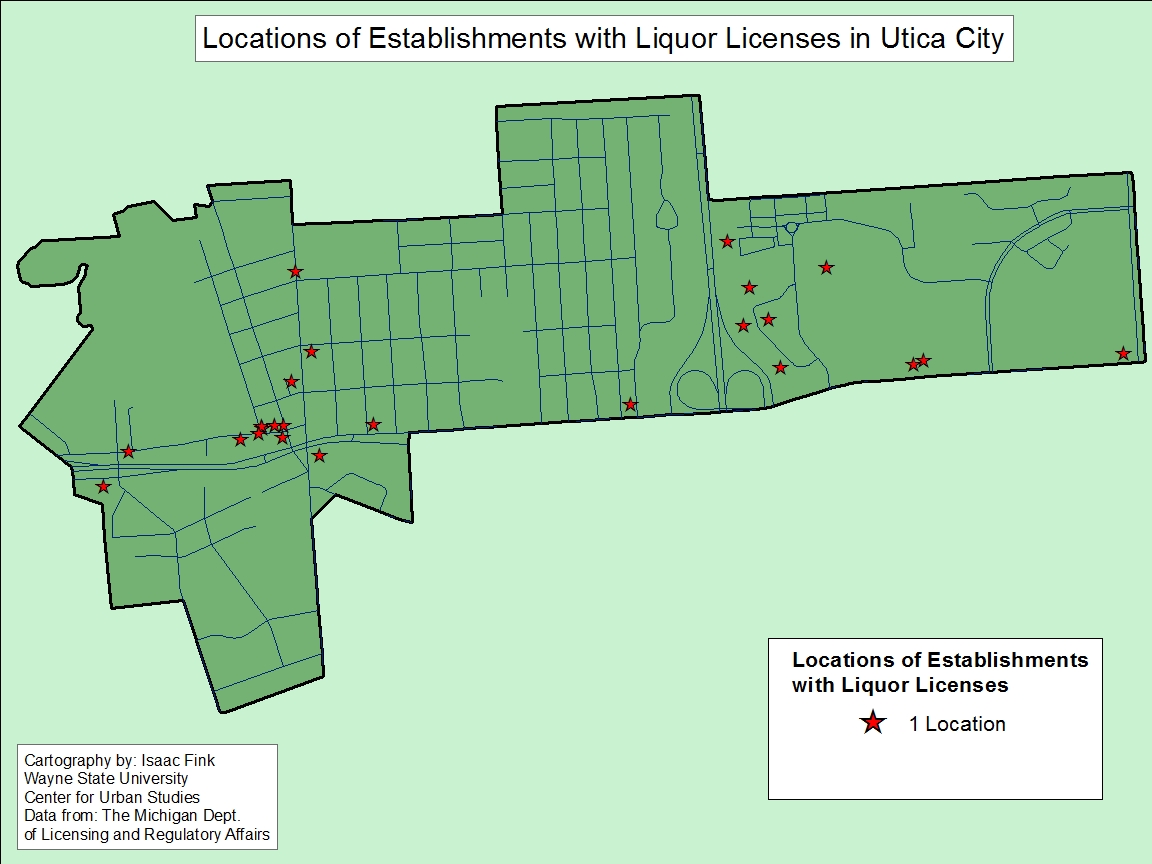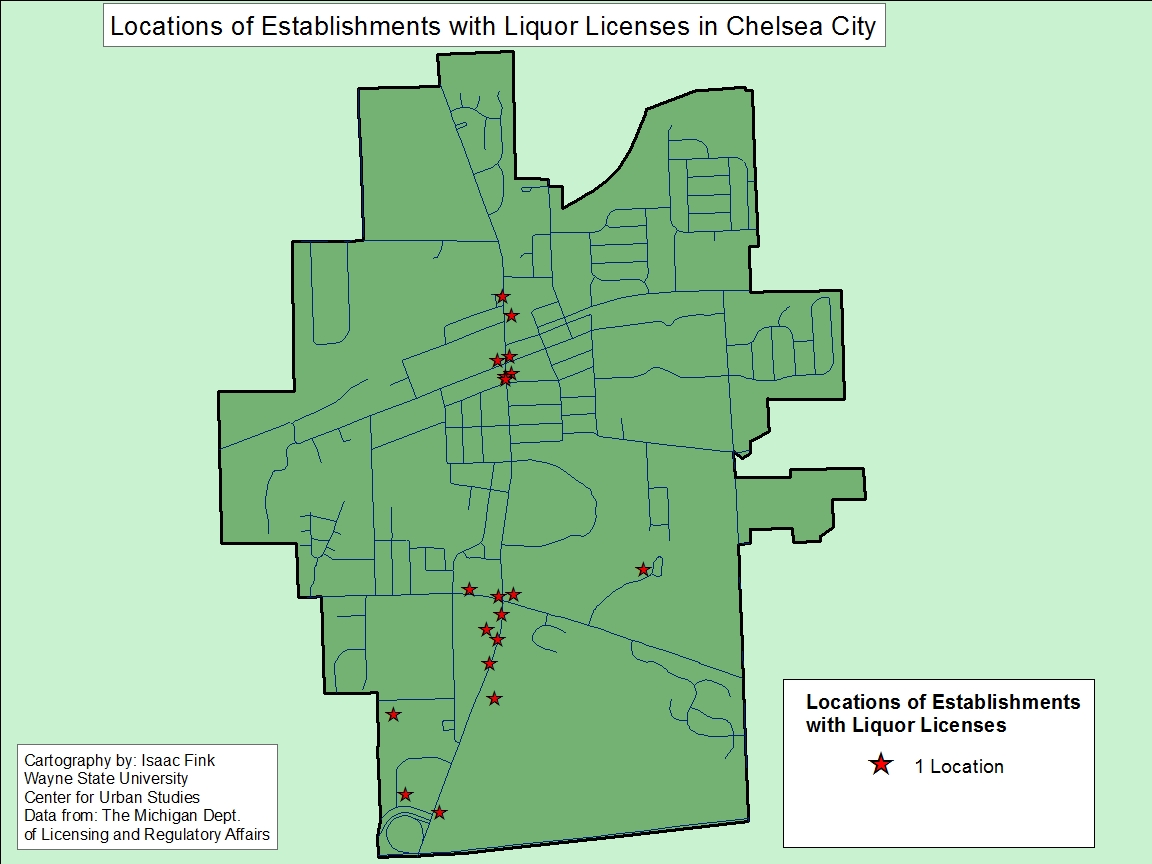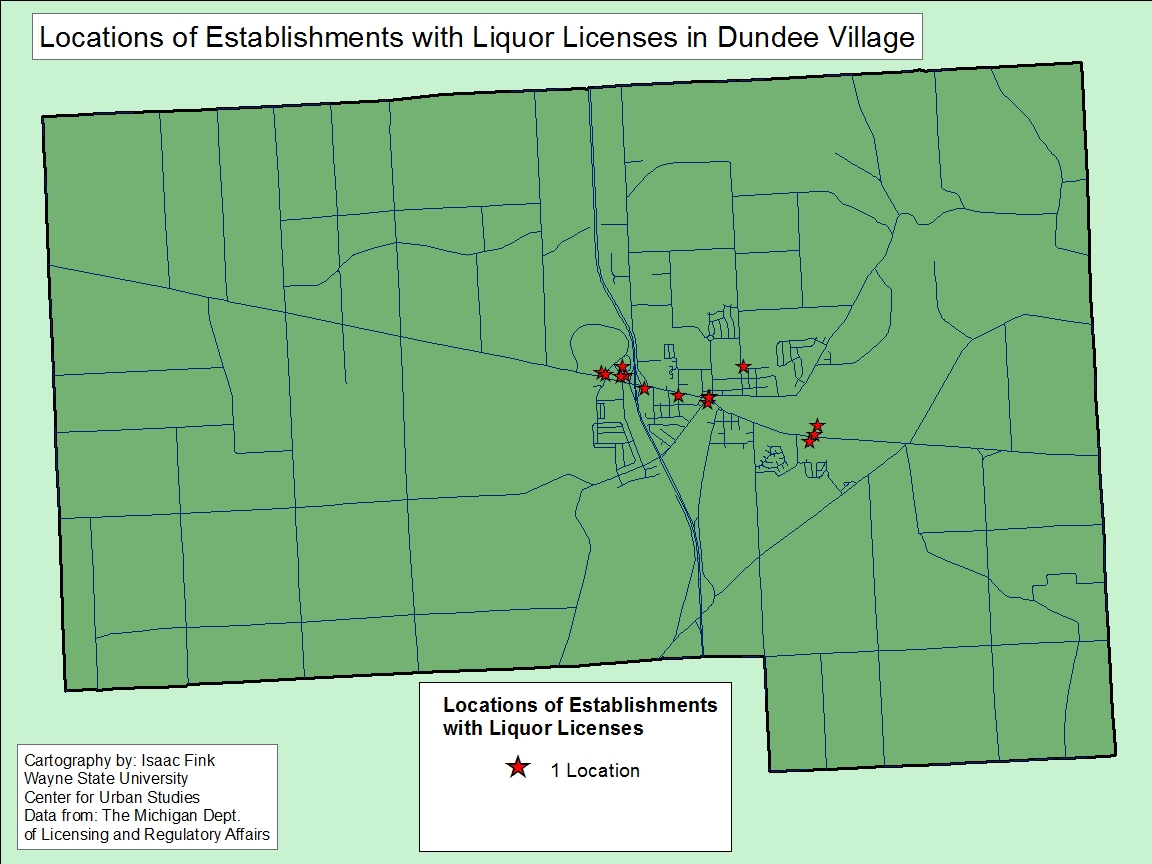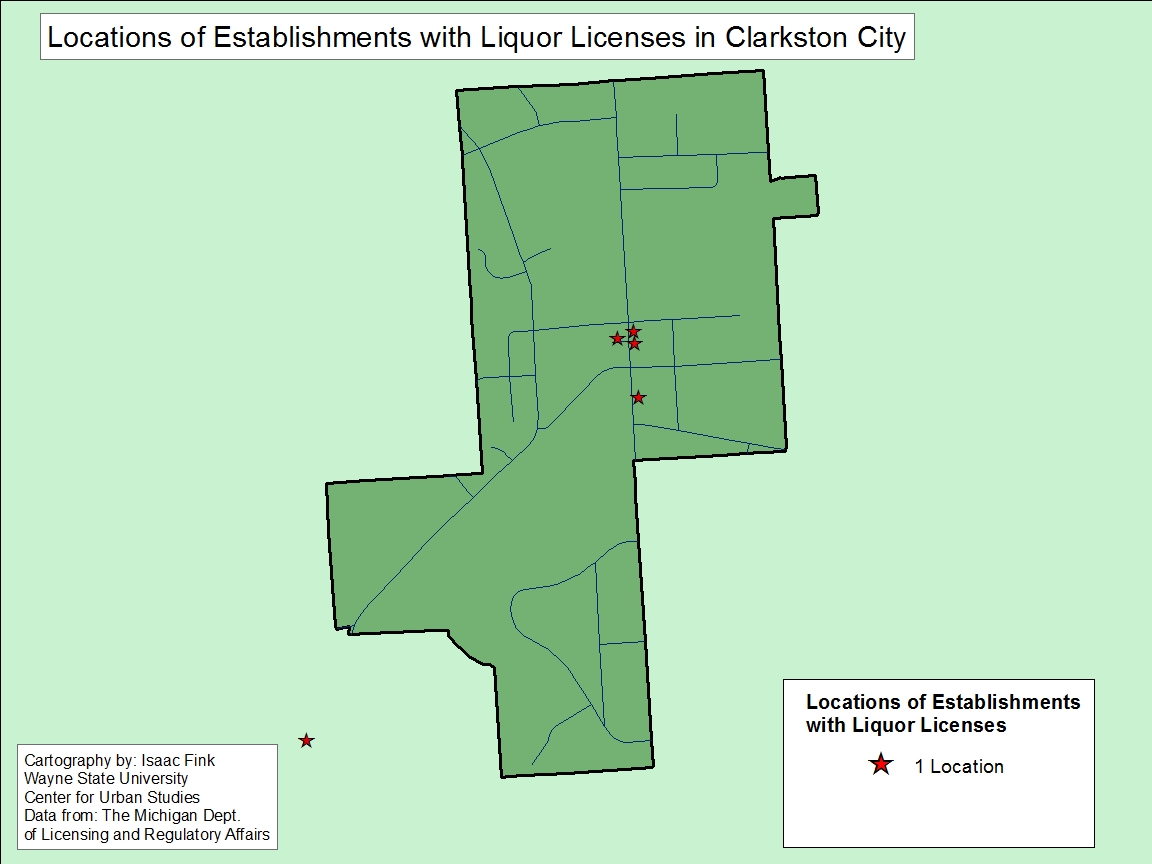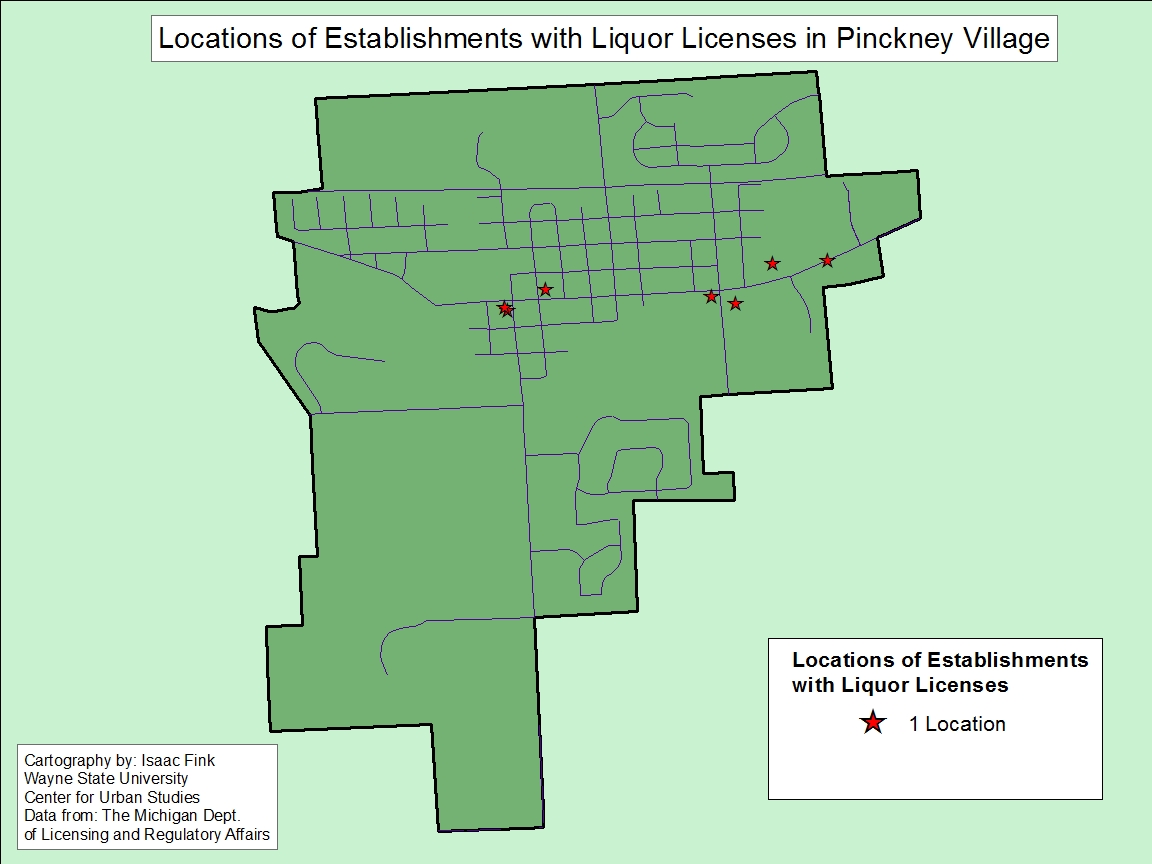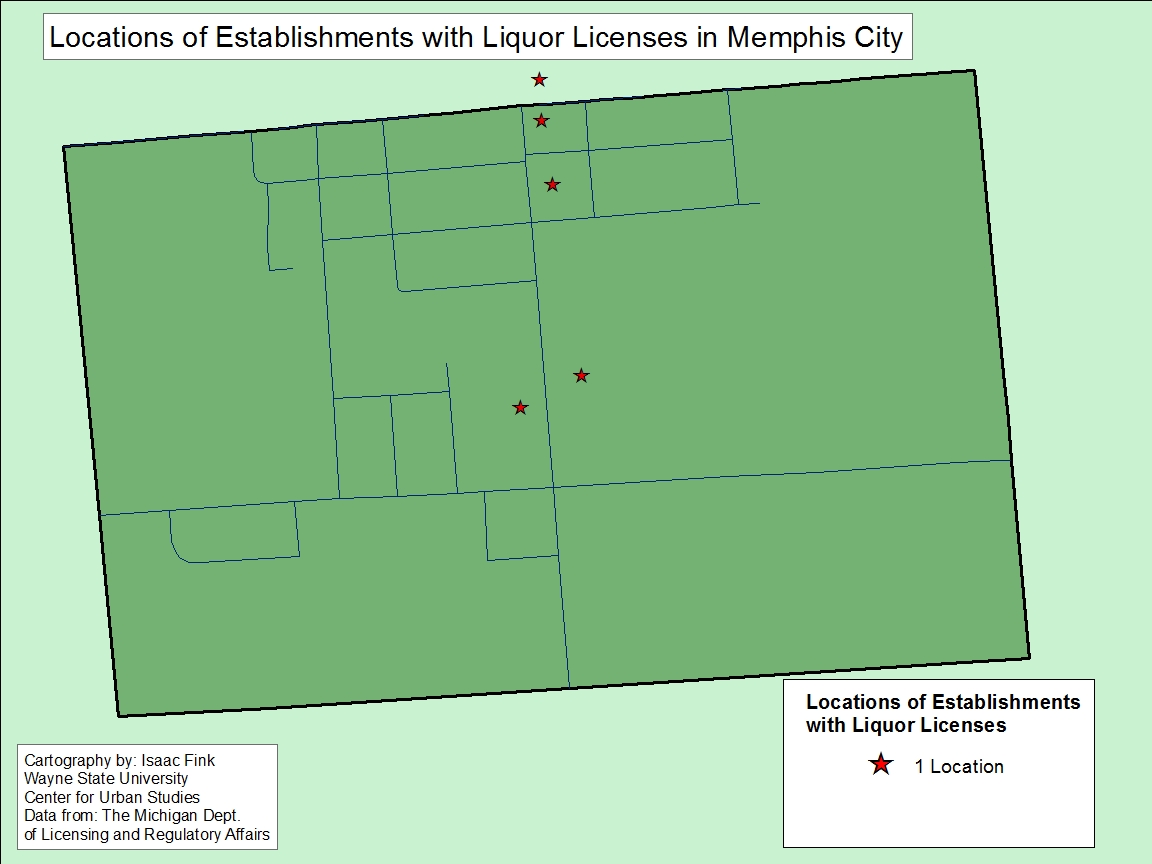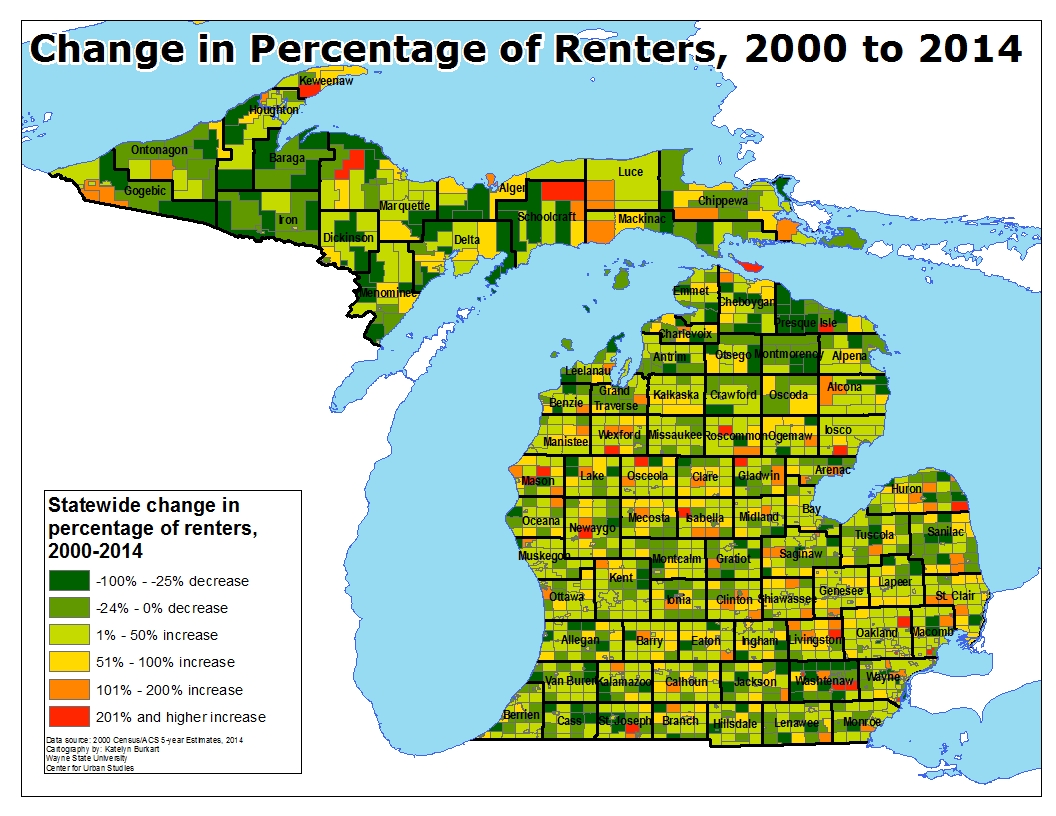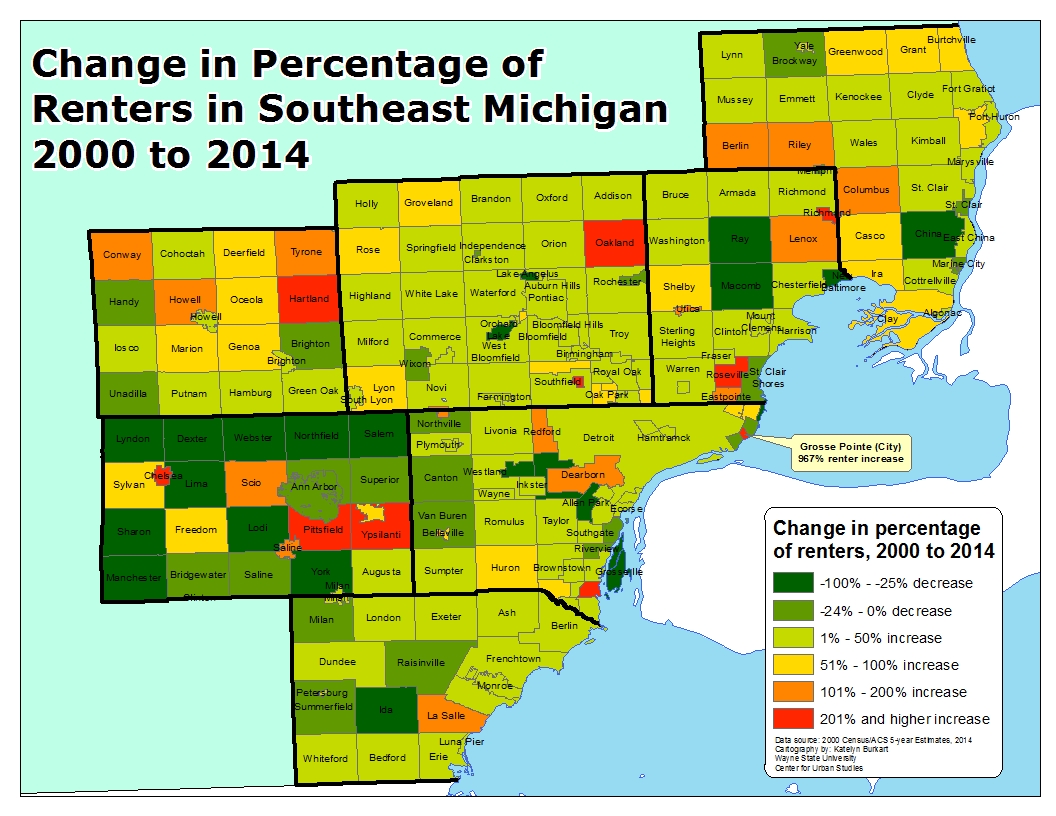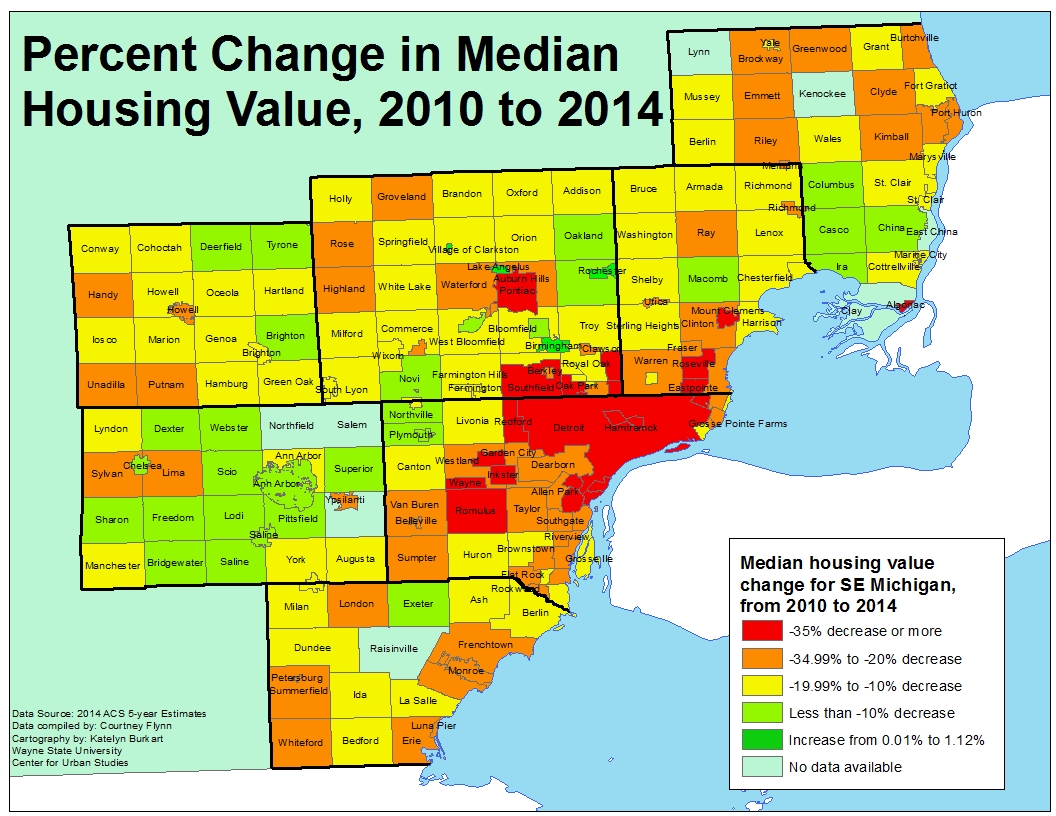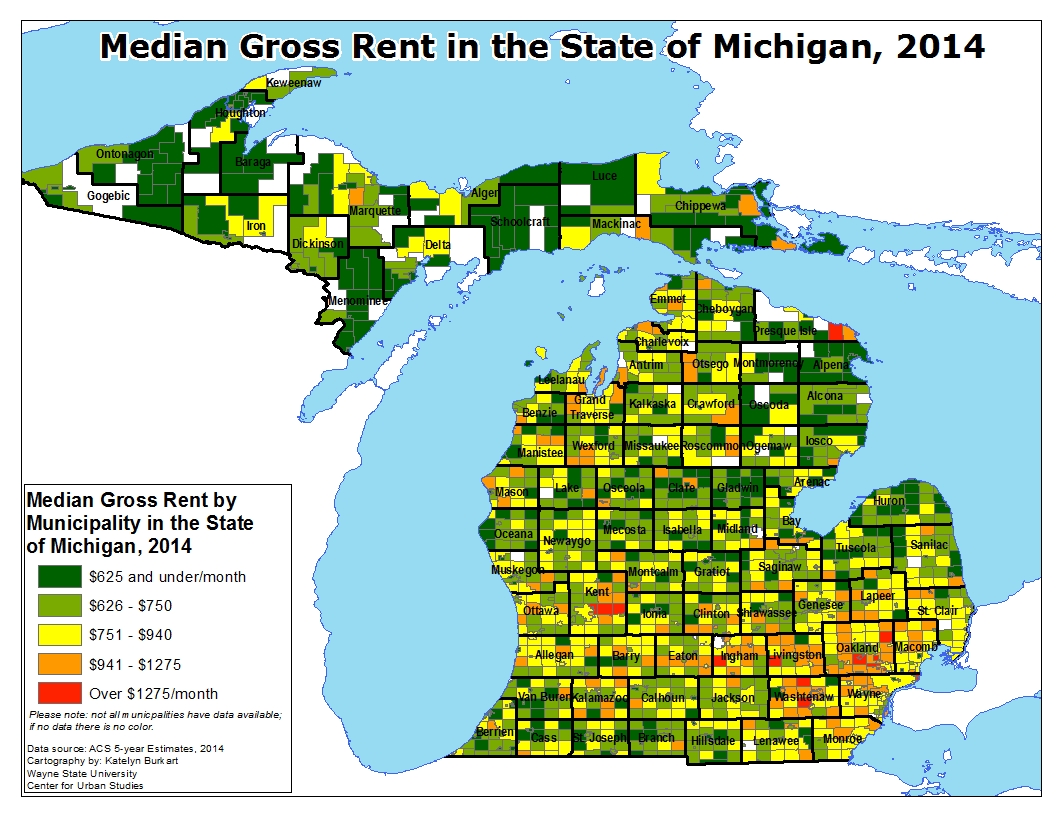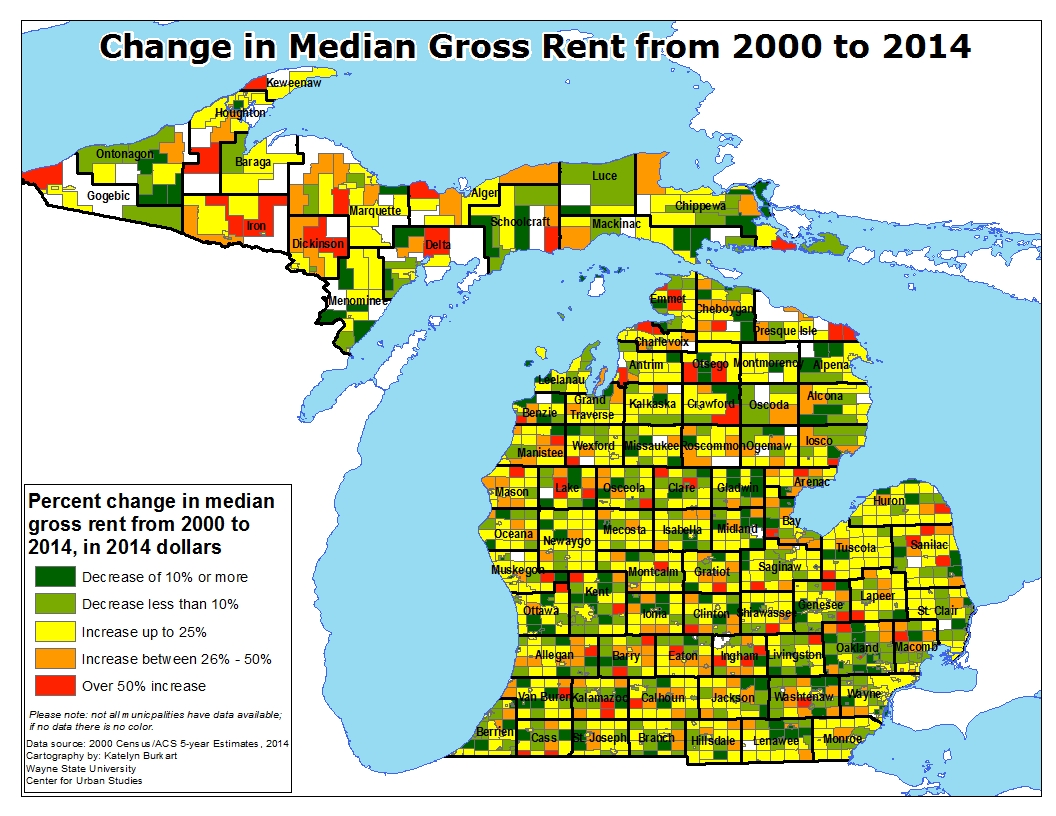This post explores how the percentage of residents between the ages of 18-64 living in poverty has increased throughout Southeastern Michigan since 2000 and 2015. The bottom line here is that the substantial majority of communities saw increases, some of them substantial, in poverty over the years 2000 through 2015. Only 10 saw decreases.
All data is provided by the U.S. Census Bureau and the U.S. Department of Health and Human Services. In 2000 the poverty threshold for an individual was $8,350, and for a family of four it was $17,050. In 2010 the poverty threshold for an individual was $10,830, and for a family of four it was $22,050. The poverty threshold for an individual in 2015 was an annual earning of $11,770, and for a family of four it was $24,250.
According to data from the U.S. Census Bureau, the City of Highland Park had the highest percentage of individuals between the ages of 18-64 living in poverty in the years 2000, 2010 and 2015. Between each of the years the percentage has continued to grow. In 2000, the Census reported that 35 percent of the adult population between the ages of 18-64 was living in poverty in Highland Park. In 2010 that number increased to 42 percent and by 2015, 46.1 percent of the adult population between the ages of 18-64 in Highland Park was living in poverty. Just as Highland Park remained at the top of the list for the percentage of individuals between the ages of 18-64 living in poverty, the top five Southeastern Michigan communities with the highest poverty levels didn’t shift much from year-to-year. The data are displayed below.
2000
- Highland Park: 35%
- Detroit : 23%
- Hamtramck: 23%
- Ypsilanti: 20%
- River Rouge: 20%
2010:
- Highland Park: 42%
- River Rouge: 36%
- Hamtramck: 35%
- Detroit: 31%
- Royal Oak Township: 28%
2015:
- Highland Park: 46%
- Hamtramck: 41%
- River Rouge: 41%
- Detroit: 38%
- Ypsilanti: 34%
Percent in Poverty Level Changes 2000-2010
When viewing how poverty levels have increased over time, the data shows that between the years 2000 and 2010 the City of Memphis (on the border of St. Clair and Macomb Counties) had the highest percentage increase of individuals between the ages of 18-64 living in poverty at about 17 percent. River Rouge and Hamtramck followed in the number two and three spots with percentage increases at 16 and 12, respectively. Highland Park experienced an increase at 7 percent while Detroit experienced an 8 percent increase.
Percent in Poverty Level Changes 2000-2015
Expanding the range of dates from 2000 through 2015, River Rouge, Hamtramck and Port Huron Township had the highest increases in the percentage of individuals between the ages of 18-64 in poverty between 2000 and 2015. For River Rouge that increase was 21 percent; Hamtramck had a 19 percent increase, and Port Huron Township had a 19 percent increase. In Detroit the percentage increase for individuals in poverty between the ages of 18-64 was 15 percent, and in Highland Park it was 11 percent.
In total, of the 213 communities in Southeastern Michigan for which long-term poverty data was available there were only 10 that experienced a decrease in the percentage of individuals between the ages of 18-64 living in poverty between 2000 and 2015. On the opposite side of the spectrum, there were 27 communities where the percentage increase of individuals in poverty was at 10 percent or above; less than 10 of those communities were outside the direct Detroit suburbs.
Percent in Poverty Level Changes 2010-2015
Finally, we examine the change in the percentage of individuals between the ages of 18-64 in poverty between the years 2010 and 2015 the data shows that the highest increases occurred in the more rural areas of the region. For individuals between the ages of 18 and 64 the city of Richmond had the highest percentage increase of residents living in poverty at 13 percent. Ypsilanti and the City of Yale both had 12 percent increases. London Township and Port Huron Township were the only other two communities in Southeastern Michigan where the percentage increase of the individuals between the ages of 18-64 was above 10 percent. The City of Detroit experienced a 7 percent increase and Highland Park experienced a 3 percent increase in the percentage of individuals between the ages of 18-64 who lived in poverty between the years 2010 and 2015.
Between 2010 and 2015 there were 58 communities in Southeastern Michigan where the percentage of individuals living in poverty decreased. The City of Unadilla had the largest decrease at 9 percent. None of the communities that experienced a decrease in the percentage of individuals between the ages of 18-64 were an inner-ring suburb of Detroit. The communities with decreases in poverty levels around 5 percent and above were located on the more outer edges of the region.
While the data shows that poverty levels have continued to increase for majority of the communities across the region, there are signs that the growth of poverty levels are decreasing. Between 2010 and 2015 there was a smaller number of communities who experienced an increase in poverty levels than between 2000-2010 or 2000 to 2015. The data comparing 2010 and 2015 levels also shows the percentage of poverty levels decreasing above 6 percent in certain communities, a statistic that was not achieved in the 2000 to 2010 comparisons and the 2000 to 2015 comparisons. However, the data does indicate that long-term poverty level growth appears to have been primarily concentrated in Detroit and its inner-suburbs. The more recent poverty data though (2010-15) shows that higher poverty levels are also being seen in the more rural areas.
Next week we will view how poverty levels are affecting the elderly population.
